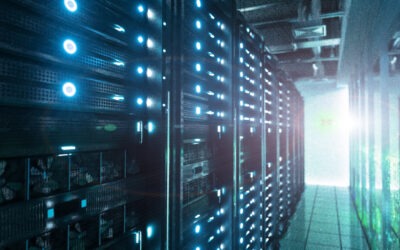More data means more energy consumption. With every search, selfie and online purchase, we are (directly and indirectly) consuming energy. How much really depends on the efficiency of the services in the mix – and an important part of this mix is data centres.
Data centres have the potential to consume vast quantities of electricity. They also have the potential to be very efficient. Choosing a more modern colocation provider that implements state-of-the-art power and cooling technology can help take your carbon footprint from obscene to green.
Why do data centres need so much energy?
It’s largely down to the amount of power used by all the hardware that stores this data, and also how much heat the hardware emits – which needs cooling, and so requires more power.
While the data centre industry has made incredible progress in terms of increasing efficiency and switching to renewable energy sources, there is still some way to go and we need to look to new technologies to help.
With cooling such a significant part of a data centre’s energy consumption, this is an obvious place to look for energy savings. At the moment, cooling techniques vary depending on the age, size and location of the data centre.
The different data centre cooling methods
Computer room air conditioning (CRAC) – the air is cooled using compressed air that is pushed up through the floor. Unfortunately, the cold air warms as it rises, making it not very efficient. Containment – creating hot and cold aisles on the data centre floor – helps to alleviate this problem, but overall CRAC is still quite energy intensive, doesn’t have the requisite level of performance for high-performance computing, and can move contaminants around the room with the air.
Rear-door/direct-to-chip cooling – Systems like these seek to bring cooling to the servers. Piping cold water/liquid coolant to the back of the servers or direct to the chip is a much more efficient means of cooling. At Redcentric we combine our rear-door cooling with adiabatic cooling towers for the utmost cooling effectiveness and efficiency, with minimal power use. This has contributed to our very low PUE (power usage effectiveness) score of just 1.14 compared to the UK average of 1.67.
PUE is the ratio of energy used to power the IT equipment inside the data centre to the total energy entering the data centre (i.e. that used for cooling, lighting, etc.) Optimal PUE would be 1.0, meaning the only power being consumed is that used to power the hardware being stored/used therein.
Immersion cooling – This is a totally different direct cooling system whereby your servers are submerged in dielectric (i.e. non-conductive) liquid. Because liquid is much more effective at conducting heat than air is, immersion cooling is a very efficient cooling system that requires minimal energy input. There is no compressed air and there are no fans – either in the cooling system or in the hardware being submerged, creating an instant and dramatic power saving. With immersion cooling, it is possible to reduce PUE to as little as 1.03.
What impact could immersion cooling have on the industry’s environmental impact?
The impact of more efficient cooling will be felt in a number of ways. First, it will enable more data centre providers to minimise their environmental impact. As global computing capacity continues to grow at an exponential rate, this is an important point – we need capacity to grow, not energy consumption. The only way for that to happen is to invest in ever-more efficient, sustainable and preferably closed loop systems for maximum power and water usage effectiveness.
Second, greater efficiency results in reduced operating costs. This is obviously key both to data centre operators and data centre users, who should see the benefit of that cost reduction.
A third and perhaps even more interesting way that immersion cooling and other efficient cooling methods could help the environment is through the capture and utilisation of waste heat. The quicker cooling is achieved, the more waste heat can be recouped. If this heat can be used – whether in nearby residences, or by local industry – then that saves more energy and offers a potential revenue stream for the data centre. This may sound like a pipe dream – but it is already being done in some parts of the world. And the more ‘mileage’ you can get out of the heat coming off your servers, the more that PUE of 1.0 looks achievable.
Want to partner with a green data centre?
Good! The more people that specify they want their colocation and managed service providers to be environmentally responsible, the more pressure there will be on the industry to adopt new technologies. And with companies like PeaSoup leading the way by cooling their cloud services with immersion cooling (hosted within Redcentric’s data centre), this pressure is building.
Data centres are currently said to be responsible for 1% of the world’s electricity consumption. The extent to which that figure increases or decreases over time will come down to how efficiently data centres operate and in particular how much energy they use to achieve cooling.
Redcentric’s sustainable hosting of HPC
At Redcentric, we are prioritising sustainability by investing in green infrastructure wherever we can. Our adiabatic cooling system and rear-door chilling are highly effective and efficient, and we are also beginning to phase in immersion cooling capacity, giving our customers plenty of choice for sustainable colocation and cloud services.
Our HPC racks can cool up to 45kW, with the option to get immersion cooling if you need higher power consumption than that, and our experts are available if you want to get advice on what would be the best option for your HPC system.

